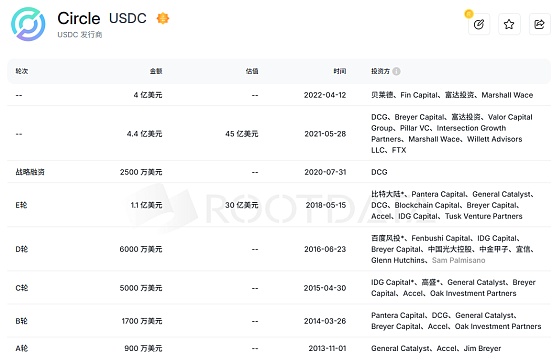The United States is heavily promoting stablecoins, with various parties strongly gathering, but the veteranCircle is still the first to break the ice.
The capital market's optimism is self-evident, and for the industry,Circle's listing is far more than just selling stocks.

Despite luxurious capital escort, Circle's listing path was not smooth. In 2018, after completing Series E financing with a valuation of $3 billion, Circle already had preliminary IPO ideas, planning to stand out with "compliance + listing + transparency". But before the warm-up could last a year, the unexpected market crash in 2019 caused Circle's valuation to plummet from $3 billion to $750 million, shattering the IPO dream for the first time.
On May 27th, Circle denied sale rumors. On the same day, Circle officially submitted its listing application to the New York Stock Exchange. According to the prospectus disclosed at the time, Circle will issue 24 million Class A shares, with 9.6 million shares issued by the company and 14.4 million shares from existing shareholders, with an expected pricing range of $24 to $26 per share, to be led by JPMorgan Chase and Citigroup as underwriters.
However, from a business model perspective,Circle has obvious potential risks. In terms of revenue, Circle's total revenue in 2024 is $1.676 billion, with a year-on-year growth of about 16%, of which approximately 99.1% of revenue comes from interest income on USDC reserve assets, reaching $1.661 billion, with other revenue at $15.169 million. It can be seen that risk-free interest spread is actually Circle's core income source, but this is clearly based on the background of macroeconomic tightening and high interest rates. If subsequent rate cuts are initiated, its income will be affected, in other words, Circle has a strong correlation with systemic cycles, thus potentially involving systemic risk spillover.Circleonly has $156 million, with $1.45 billion mysteriously disappearing, precisely due to seemingly trivial issuance fees. Most people would think that large-scale on-chain token issuance costs approach zero, but while token issuance is zero-cost, issuance in the current ecosystem is a technical challenge, highly dependent on major exchanges' network effects. Breaking down issuance costs, Coinbase is the largest partner, skimming $900 million in profits from Circle alone, accounting for 54.18% of Circle's annual revenue. Meanwhile, Circle cooperates with Binance to allow USDC to participate in Binance Launchpool, with a one-time replacement cost of $60.25 million, and as long as Binance holds no less than $1.5 billion in USDC, monthly incentives will be distributed based on USDC custody balance in the next two years. It's clear that in profit composition, Circle's bargaining power is relatively weak, and profits are thus squeezed by exchanges and other partners.
On the other hand,Circle's listing obsession has created market doubts about potential cash-out, believing this move is only to allow large capitals to exit smoothly, benefiting Wall Street capital rather than truly benefiting retail shareholders. Currently, this view seems somewhat thin. First, as early as 2018, Circle's valuation reached $3 billion, and the subsequent $440 million financing in 2021 was based on a $4.5 billion valuation, suggesting most investors entered at relatively high valuations. Therefore, despite the current $7.2 billion total valuation, it's not an astronomical return for long-term early investors. Secondly,unlike Coinbase's direct listing, Circle adopted a conventional IPOmethod, meaning early investors and insiders cannot sell shares within the first 180 days, at least not allowing retail investors to provide exit liquidity in the short term.From pre-listing speculation, with over-subscription, most industry professionals believeCircle will perform quite well.
Additionally, some analysts believeCircle's listing will stimulate the DeFi market. As Circle's valuation rises, businesses or projects closely related to stablecoins may also have growth opportunities. In other words,Circle might become a valuation anchor in the DeFi field.
Theoretical significance is a subjective product, but market attitude is fundamental. Whether it truly has value or is just capital cash-out, Circle's curve on the first day of listing will tell everything.






